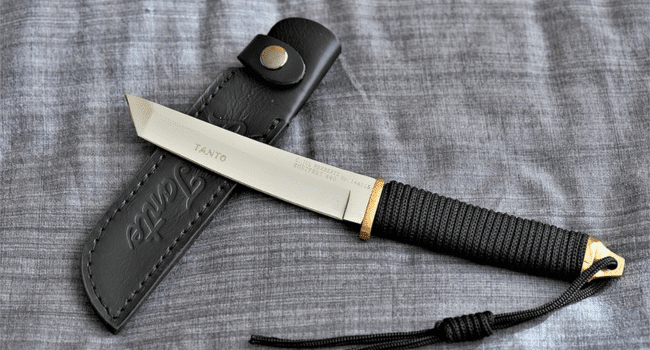Table of Contents
Hardly anyone will call a bow or a sword the traditional w
eapon of Japan. Katana! – that is what we associate with the soldiers of this country. And to say this, we are wrong: the samurai Katana, as it is now, appeared relatively recently in the Edo era, and the Japanese weapons tradition is much older.
Get to know the later, tragic part of the history of the Japanese blade we offer you right now.
-
The decline of knife art and the problem of keeping the secrets of masters
The second half of the 19th and 20th centuries are roughly divided into Meiji (1868 – 1911), Taishō (1912 – 1925), Shōwa (1926 – 1988) and modern Heisei (1989). In the context of our story, it makes no sense to speak about them separately, as all changes in the art of making Japanese cold weapons during these periods are brought from outside; what is remarkable is that they are all unambiguously negative
- In the early 1870s it is forbidden to wear swords and tanto for samurai, first in the order of «voluntary refusal», then forcibly.
- After that, the weapons are Europeanized – there are satisfying, and ridiculous, compared to the traditional Japanese swords, and sabres; the old Nihon-to (samurai swords) cut and grind (!) in European style.
- After World War I, the government realized that the country was losing unique technologies that had been used successfully for more than a thousand years, and was trying to restore at least the forms of traditional swords; they were manufactured by the factory method. They perform better than European sabres, but certainly cannot even compare to hand-crafted examples.
- World War II seemingly fills the last nail in the coffin of this craft: Americans take away more than 600,000 blades, of which only two-thirds go to private and museum collections; a third (two hundred thousand copies) is simply destroyed, lost, thrown into the sea. The United States of America also prohibits the manufacture of cold weapons on Japanese territory.
Is everything lost? It seems so. But the Japanese masters, wishing whatever it takes to preserve the art (whose secrets, by the way, have never been recorded, but passed orally from the teacher to the best student), find a way.
-
Cold Weapons Manufacturing Tradition in Japanese Kitchen Knives
The first thing that snatches the look of even a beginner comparing Japanese and European kitchen knives – is the difference in the shape of the blade. Let us not forget that the knife, which now serves peaceful purposes, is the child of a true weapon of war, quick and rapacious. That’s why, unlike the European Chef’s Knife, the Cutter’s Blade is lowered to the cutting edge, making it look like an axe, which can be used to chop herbs and vegetables with such grace and brilliance. In the tradition of European masters, there is no such thing – almost all of them, on the contrary, lift the cutting edge to the brink, making it less suitable for cutting (although safer for the cook).
The structure of the blade kitchen tool is also adopted from weapons made by Kasumi technology: a thin sheet of hard high-carbon steel (stamps up to 62 HRC, unlike the European maximum of 58 HRC), which turns into softer steel. The idea of this technology is to grind the soft surface on one side, making a thin and firm core cutting edge; the second lining protects the middle from corrosion and deformation. Because of this, the Japanese knife lasts several times longer than the European one; while for combat weapons the ability to hold the sharpening for a long time and not corrode, now it is just a pleasant convenience.
Japanese craftsmen have always paid attention to the minor details of the weapon: in this case, not only the blade but also the hilt. Narrow and long enough, it is convenient for any grip and does not allow you to tire even small and weak arms.
No other knife in the world has a pedigree as beautiful as that of a traditional Japanese kitchen knife; it has become the heir to a blade that has been perfected for over a thousand years. And the fact that we now have the opportunity to have such a masterpiece in our kitchen and work with it every day is just great.
Japan starts mass production of kitchen knives, and the «tasted» the first Americans force the Japanese into the world market.
Read more on KulFiy
